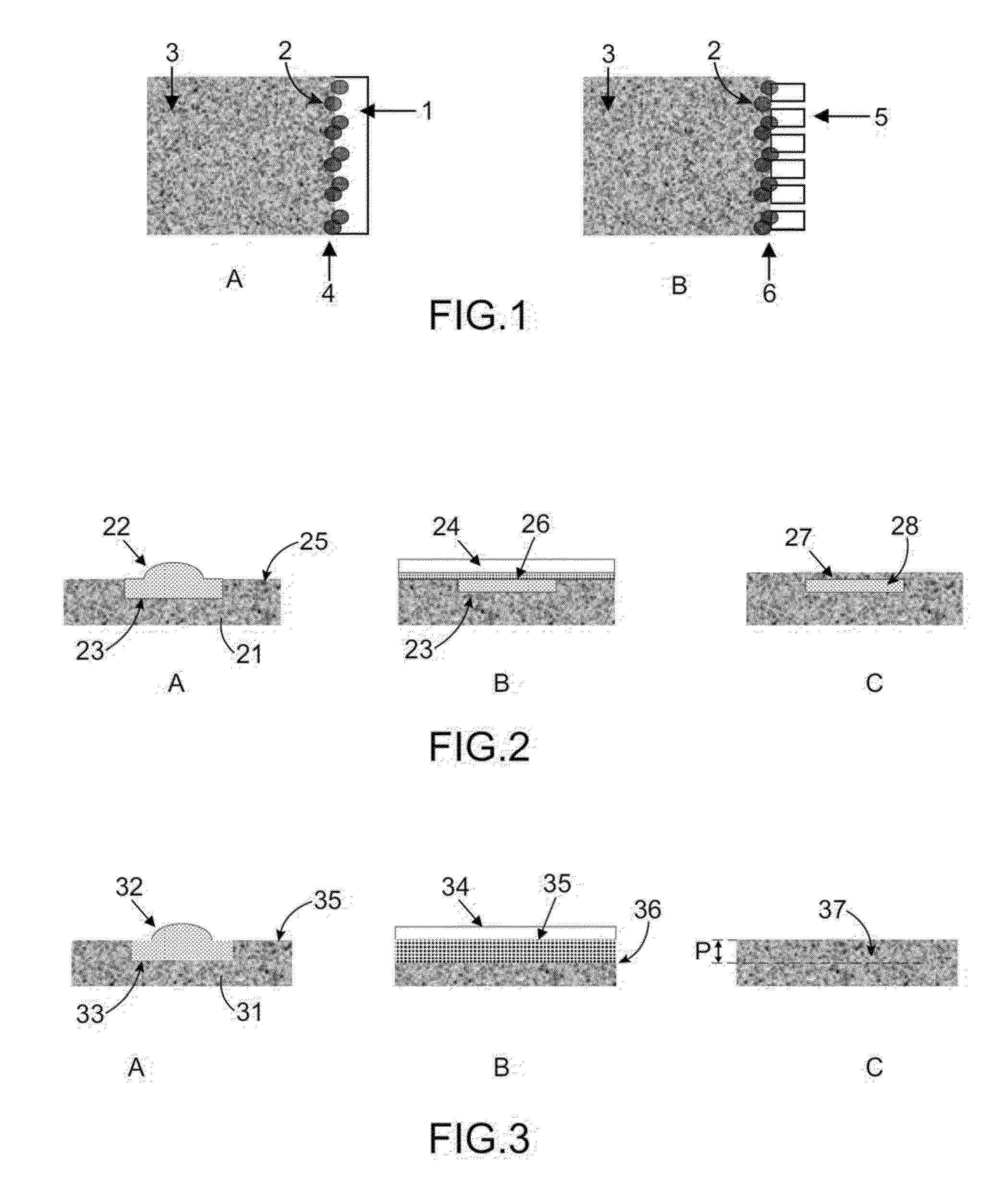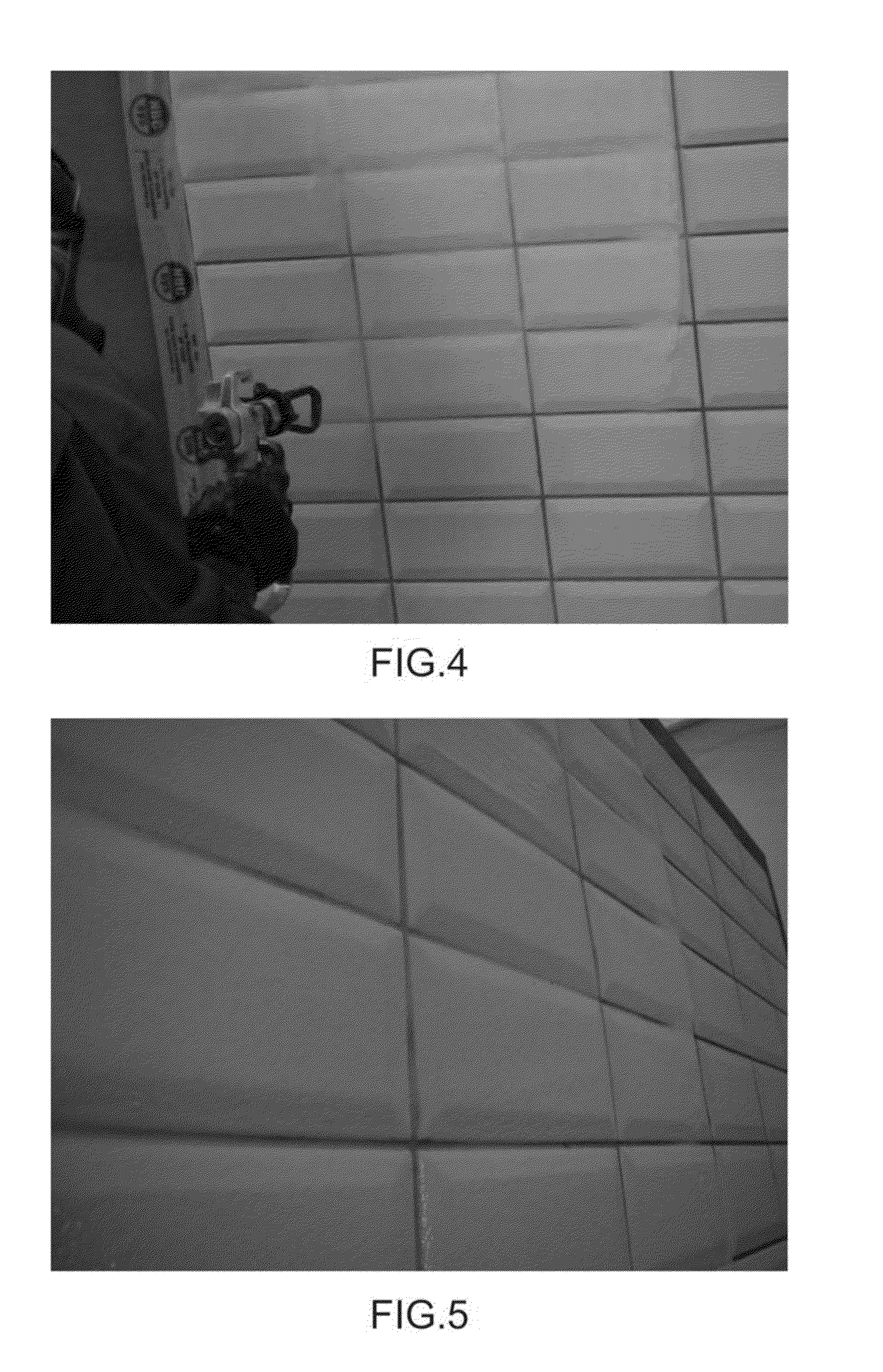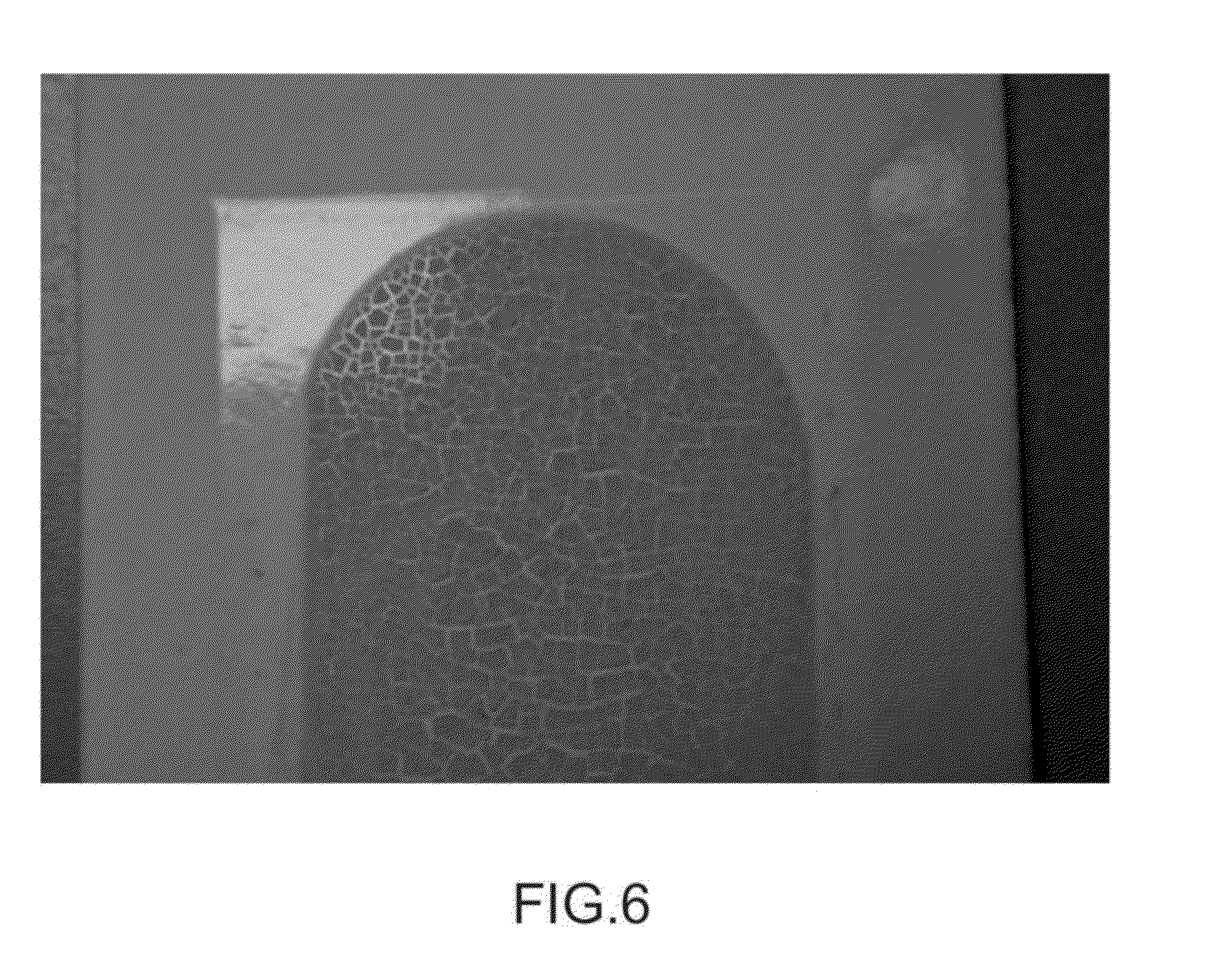Pigmented decontaminating gel and method for decontaminating surfaces using said gel
a decontaminating gel and pigment technology, applied in the direction of biocide, detergent dye, detergent compounding agent, etc., can solve the problems of limiting the time of radioactive contamination exposure of operators, limiting the chemical stability of the gel mass, and a fourth of the initial spraying gel mass
- Summary
- Abstract
- Description
- Claims
- Application Information
AI Technical Summary
Benefits of technology
Problems solved by technology
Method used
Image
Examples
example 1
[0318]In this example, the discoloration of basic gels is studied during their drying. The gels analyzed in this example are basic mineral gels consisting of 14% of Aeroxide® Alu C alumina marketed by EVONIK INDUSTRIES and having a specific surface area of 100 m2 / g (BET), of 0.2% of surfactants (Pluronic® PE6200 from BASF, and Empilan® KR8 from HUNTSMAN), and the balance 1M soda.
[0319]According to these gels (Table 1), the formulation may also contain a pigment, i.e. 0.1% by mass of micronized red iron oxides Ferroxide® from Rockwood Pigments Ltd of formula Fe2O3 with an average particle size of 0.1 μm or 0.5 μm.
[0320]The surfactants, the optional iron oxides, and the soda are first of all mixed by means of a mechanical stirrer provided with a three-blade stirrer at a rate of 200 rpm for 3 to 5 minutes.
[0321]The alumina is then gradually added into the reaction mixture by gradually increasing the stirring as the viscosity increases so as to reach about 400 to 500 rpm without there b...
example 2
[0338]In this example, the discoloration of an acid gel according to the invention is studied during its drying.
[0339]A colored acid gel is formulated, containing red iron oxide pigments in order to show that discoloration during drying also occurs when the gel is an acid gel.
[0340]This gel, called gel GB75, consists of 14% of silica Tixosil® 331 marketed by RHODIA which has a specific surface area of 200 m2 / g (BET), 0.2% of surfactants (Pluronic® PE6200 from BASF, and Empilan® KR8 from HUNTSMAN), 0.1% of micronized red iron oxides Ferroxide® 212M from ROCKWOOD PIGMENTS LTD of formula Fe2O3, and the balance 1N nitric acid.
[0341]The gel is manufactured according to the same method as in Example 1.
[0342]The wet and dry GB75 gels are analyzed with a spectrometer UV-3600 Shimadzu® according to the same method as in Example 1.
[0343]The results of these analyses are shown in FIG. 9.
[0344]It appears, like in Example 1, that the acid gel GB75 is more colored than the white basic gel GB61 wi...
example 3
[0347]In this example, the rheology of the pigmented gels according to the invention is studied.
[0348]More specifically, in this example the flow properties of both colored basic gels GB62 (red) and GB63 (violet) according to the invention described in Example 1 are compared, as well as the flow properties of the GB61 white basic gel without any pigments described in Example 1, in order to observe the impact of the addition of pigments at 0.1% by mass on the viscosity of the gel.
[0349]Indeed, it is indispensable that the rheological properties of the gel, which is a so called “sprayable” gel should be retained so that said gel may be sprayed and always adheres to the support.
[0350]Thus, it should be checked that the addition of micronized particles—in this case pigments—does not modify at all the viscosity of the colloidal gel which itself consists of alumina aggregates of a micrometric size.
[0351]For this, two viscosimetric and rheological measurements are conducted.
[0352]The first...
PUM
| Property | Measurement | Unit |
|---|---|---|
| size | aaaaa | aaaaa |
| temperature | aaaaa | aaaaa |
| size | aaaaa | aaaaa |
Abstract
Description
Claims
Application Information
 Login to View More
Login to View More - R&D
- Intellectual Property
- Life Sciences
- Materials
- Tech Scout
- Unparalleled Data Quality
- Higher Quality Content
- 60% Fewer Hallucinations
Browse by: Latest US Patents, China's latest patents, Technical Efficacy Thesaurus, Application Domain, Technology Topic, Popular Technical Reports.
© 2025 PatSnap. All rights reserved.Legal|Privacy policy|Modern Slavery Act Transparency Statement|Sitemap|About US| Contact US: help@patsnap.com



